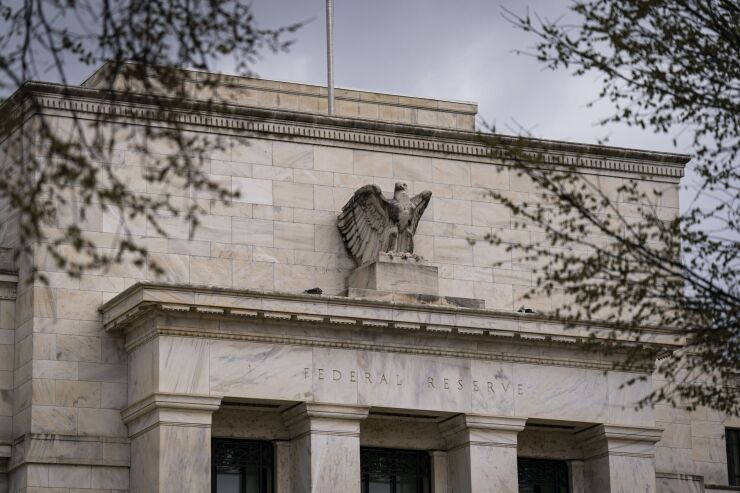
The Federal Reserve saw banks take nearly $12 billion in advances from an emergency liquidity facility within its first three days of operation.
Through Wednesday, banks had pledged nearly $15.9 billion of government backed bonds — including Treasury securities, U.S agency mortgage-backed securities and U.S. agency debt securities — to the Fed's Bank Term Fund Program, according to the central bank's weekly balance sheet disclosure.
Banks' reliance on the new facility represented just a fraction of the emergency borrowing that has taken place this week after a pair of bank failures — Santa Clara, Calif.-based Silicon Valley Bank, which was shuttered Friday, and New York-based Signature Bank, which was taken over by regulators over the weekend.
A more popular option for banks seeking liquidity seems to have been
Banks also turned to the discount window — the Fed's standing last-resort lending mechanism — in record numbers during the past week, with borrowing from that facility jumping from $4 billion on March 9 to nearly $153 billion Wednesday, an all-time high, according to the research firm Autonomous Research.
The Fed's new lending facility was
Instead of applying a haircut to pledged collateral, as is done for those posted to the traditional discount window, the super discount window takes assets at their full, par value. The roughly $4 billion difference in the amount pledged and the amount borrowed represents untapped credit that banks could choose to make use of at a later date.
Banks who borrow from the super discount window will pay an interest rate equal to the one-year overnight index swap rate plus 10 basis points. The rate will be fixed for the term of the advance. The current rate is 4.5% compared to 4.75% for primary credit borrowing at the standard discount window.
The super discount window also allows banks to borrow for up to one year, as opposed to the 90-day limit at the standard discount window.
Creating the facility required a vote of the Fed Board of Governors to invoke section 13(3) of the Federal Reserve Act. The emergency provision allows the central bank to create special lending facilities in times of severe economic shocks as means for protecting financial stability.
Historically, the act has been used to enable the Fed to support non-bank entities, as it did with its Main Street Lending Program in 2020. In this case, the designation allowed it to expand on its current last-resort lending capabilities.
Banks are still able to make use of the standard discount window if they choose.






